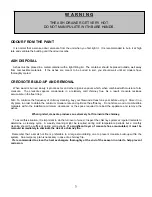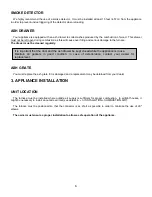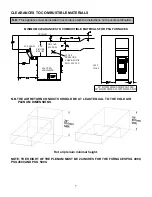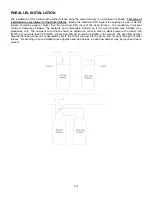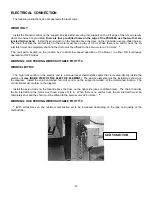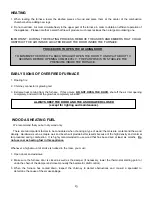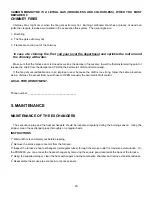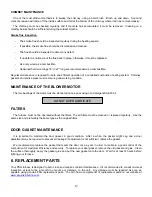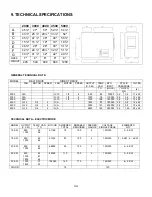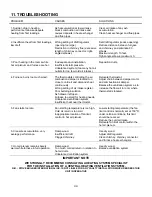
16
CARBON MONOXYDE IS A LETHAL GAS (ODOURLESS AND COLOURLESS), WHICH YOU MUST
BEWARE OF.
CHIMNEY FIRES
Chimney fires might occur when the fire gets extremely hot. Burning cardboard, branches or pieces of wood can
ignite the creosote residue accumulated in the evacuation flue system. The usual signs are:
1. Rumbling
2. The flue gets extremely hot
3. Flames are coming out of the chimney
In case of a chimney fire, first call your local fire department and sprinkle the roof around
the chimney with water.
Make sure that the furnace door is closed as well as the damper (if necessary, lower the thermostat starting point or
release the chain from the damper and CLOSE the barometric draft control manually).
If the fire gets uncontrollable due to an improper use or because the draft is too strong, follow the same procedure
as in a chimney fire except that you will have to OPEN manually the barometric draft control.
LOCAL FIRE DEPARTMENT.
Phone number: ___________________________________
5. MAINTENANCE
MAINTENANCE OF THE EXCHANGERS
The evacuation pipe and the heat exchangers should be inspected regularly during the burning season. Using the
scraper, clean the exchanger pipes thoroughly on a regular basis.
INSTRUCTIONS
1
o
Wait until fire is completely out before cleaning.
2
o
Remove the smoke pipe connector from the furnace.
3
o
Inspect the furnace’s heat exchangers (rectangular tubes) through the smoke outlet for creosote accumulation. On
the PSG5000, you can access the heat exchangers by removing the square panel located at the back of the furnace.
4
o
Using the supplied scraper, clean the heat exchangers and the combustion chamber and remove creosote residues.
5
o
Reassemble the smoke pipe connector or access panels.




